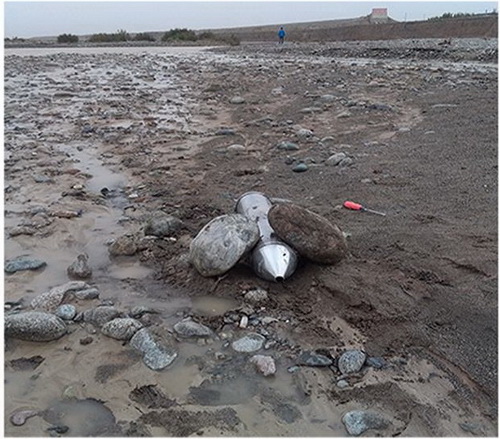Multiple Composite Fingerprints Assist to Quantify Sources of River Sediments in an Arid Region
Updatetime:2019-08-30From:
【Enlarge】【Reduce】
Soil erosion exerts significant impacts on societal development. Severe soil erosion leads to soil nutrient loss, water quality degradation, river siltation and reservoir capacity loss.
Therefore, quantifying the sources of sediments is critical for developing appropriate and site-specific conservation measures that effectively control soil erosion within a watershed.
However, relevant study on sediment sources is limited, because most types of soil erosion and transport processes are spatially complex and difficult to measure at a watershed scale.
Recently, a research group from Northwest Institute of Eco-Environment and Resources (NIEER) of the Chinese Academy of Sciences obtained multiple analytical or numerical solutions to estimate the contributions of different sediment sources in the mountainous region of the Danghe Reservoir Watershed using multiple composite fingerprints (MCF).
Scientists collected 66 samples from north alluvial fan, south alluvial fan and high mountains of Danghe Reservoir Watershed, and divided all samples into six particle size groups. They estimated proportions of three potential source contributions using the MCF method with multiple particle size tracking. In addition, they also quantified the uncertainty of sediment source contributions using the Gaussian first-order approximation.
The results showed that the MCF method with multiple particle size tracking could obtain relatively accurate estimates of the contributions with an overall mean absolute relative error of 3.5% and a relatively narrow 95% confidence interval.
The results also indicated the major contributions were consistently coming from the high mountains for all six particle groups.
During these runoff events, the overall estimated mean proportions were 49.0%, 26.5%, and 24.5% from the high mountains, south alluvial fan, and north alluvial fan, respectively.
Furthermore, the Gaussian first-order approximation revealed that more than 60% of the total uncertainty contribution was a byproduct of the downstream sediment mixture, while each individual sediment source produced less than 15% of the absolute uncertainty.
The study result was published in Journal of Soil and Sediments.

Sediment trap (Image by LIU Benli)
Contact:
LIU Benli
E-mail: liubenli@lzb.ac.cn
Dunhuang Gobi Desert Research Station, Key Laboratory of Desert and Desertification, Northwest Institute of Eco-Environment and Resources, Chinese Academy of Sciences, Lanzhou 730000, China.
Appendix




